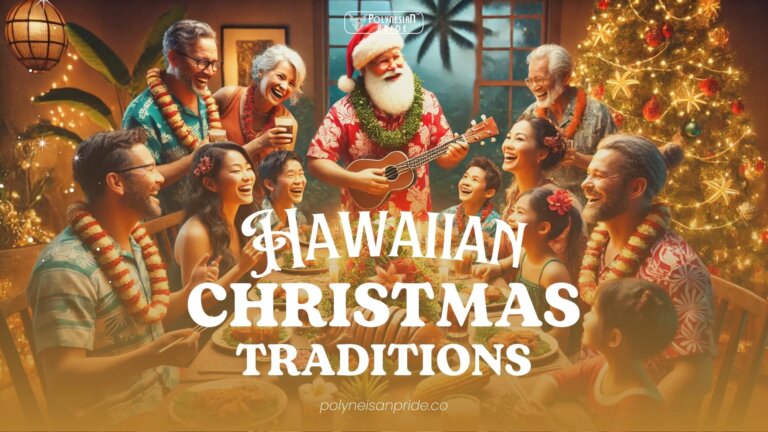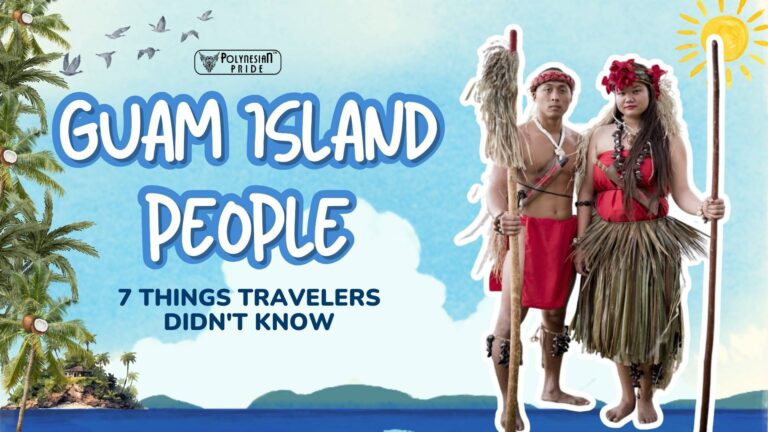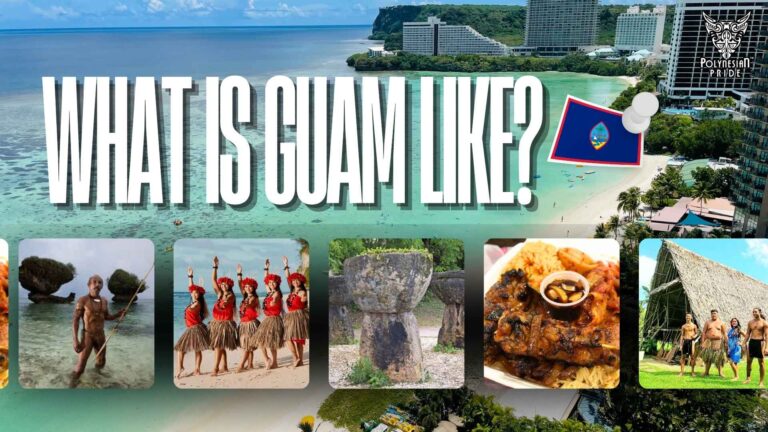Solomon Islands People — 20 Fascinating Facts You Should Know
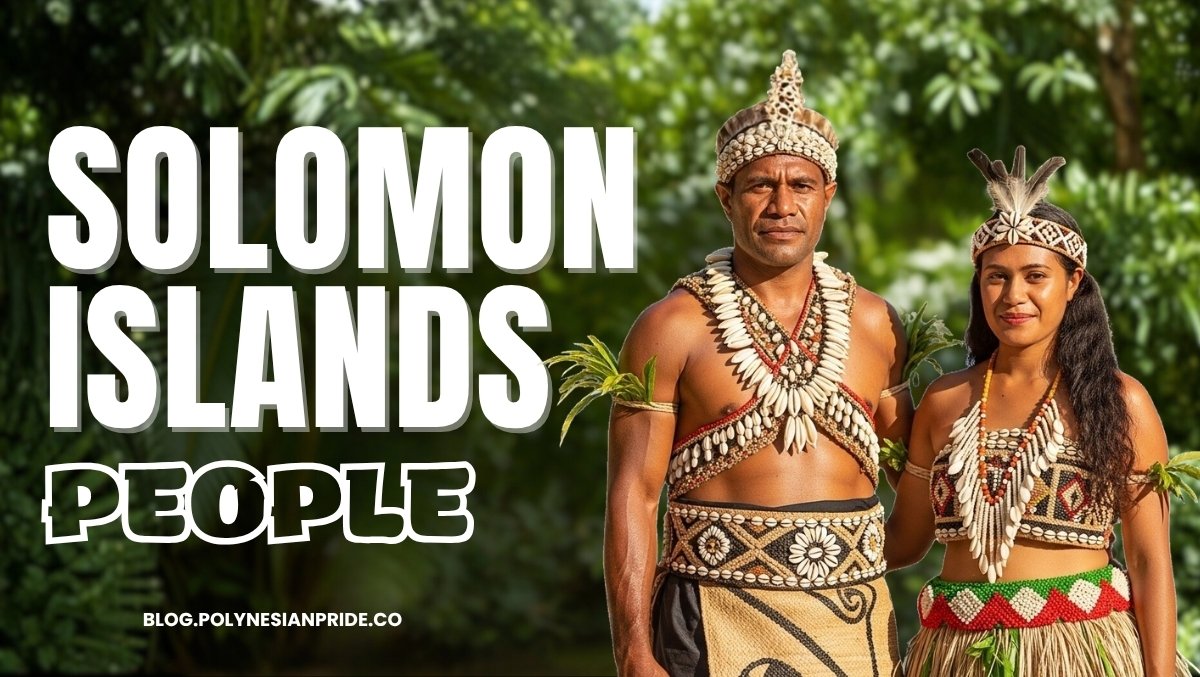
The Solomon Islands people live across more than 900 islands scattered like jewels over the South Pacific Ocean, forming a vibrant nation of over 700,000 residents. Despite the distance separating the islands, the people are united by a shared identity deeply connected to the sea, the land, and the community. Their lives flow with the rhythm of nature, reflecting a balance between tradition and modernity.
Blending Melanesian, Polynesian, and Micronesian roots, the people of the Solomon Islands embody a remarkable harmony in diversity — the timeless spirit of “many islands, one spirit.” What makes their way of life so unique? How do centuries-old customs still shape their daily routines today? In this article, we’ll journey through their world — exploring their origins, beliefs, music, festivals, and the unshakable sense of togetherness that keeps these island communities thriving.
#1. Solomon Islands: Geography and Population
Stretching across the turquoise waters of the South Pacific, the Solomon Islands form a breathtaking chain of islands lying east of Papua New Guinea and northwest of Vanuatu. Though modest in land area, the country’s geography is vast, scattered, and deeply intertwined with the ocean — a defining feature of Solomon life.
- Number of islands: Nearly 1000 islands, divided into six major provinces (Guadalcanal, Malaita, Makira, Choiseul, Isabel, and New Georgia) and numerous smaller atolls.
- Land area: Approximately 28,400 square kilometers, surrounded by an exclusive economic zone (EEZ) covering nearly 1.6 million square kilometers of ocean.
- Current population: 845,317 (as of Sunday, November 9, 2025, according to Worldometer’s elaboration of the latest United Nations data).
- Capital city: Honiara, located on Guadalcanal Island.
- Landscape: A mix of volcanic islands, low-lying coral atolls, dense rainforests, and mangrove coastlines.
The geographic fragmentation of the Solomon Islands plays a defining role in shaping its cultural diversity. Each island — often separated by hundreds of kilometers of open sea — developed its own dialects, traditions, and customs over centuries.
Yet, this distance has also nurtured an extraordinary sense of unity. The national flag, with its five white stars representing the main island groups, stands as a vivid symbol of this unity in diversity. Despite living apart, the Solomon Islands people remain closely connected through shared values of cooperation, respect, and kinship.
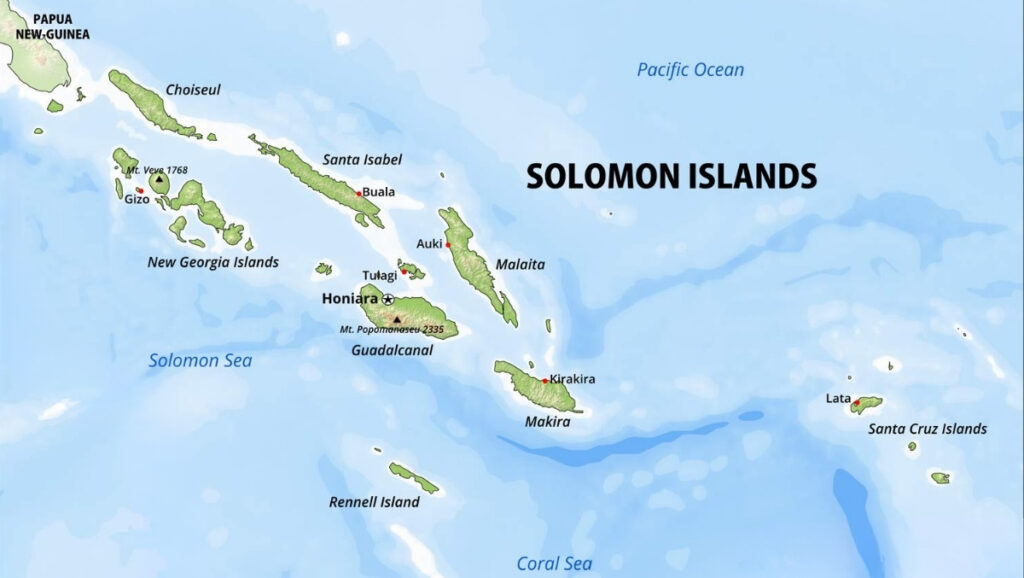
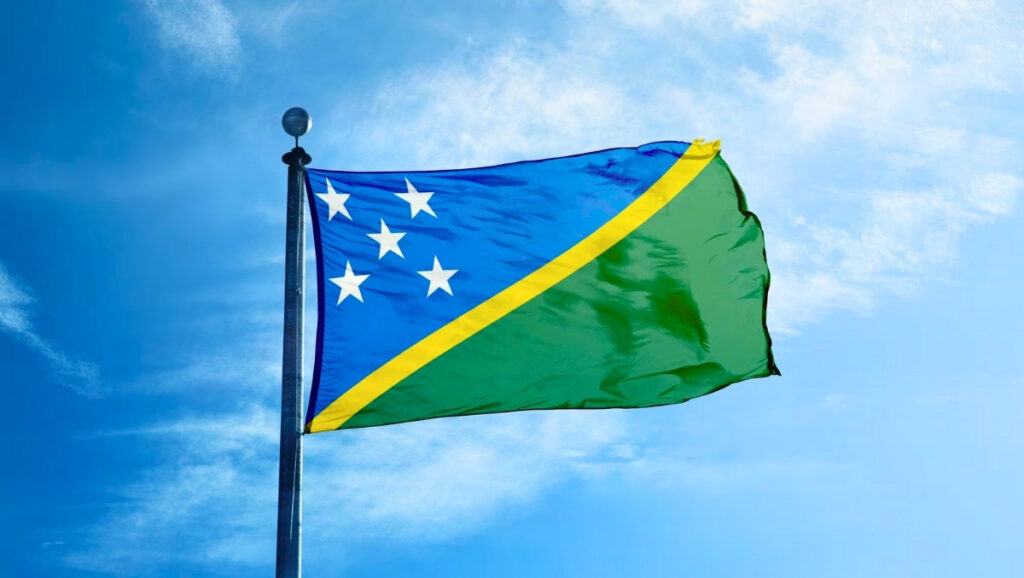
#2. Colorful Solomon Islanders Blend
The Solomon Islands people represent one of the most culturally and ethnically diverse populations in the Pacific. While the majority identify as Melanesian, the islands are also home to Polynesian and Micronesian communities — a vivid mix that gives the nation its unique cultural richness and visual vibrancy.
- Melanesians: ~95% of the population — the primary ancestral group, known for their deep connection to land and clan traditions.
- Polynesians: ~2.8% — found mainly on outer islands such as Rennell and Bellona, bringing distinctive Polynesian customs and artistry.
- Micronesians: ~1.2% — small communities originating from the northwestern Pacific, enriching the country’s linguistic and cultural landscape.
- Other ethnic minorities: <1% — including people of European, Chinese, and mixed descent, concentrated primarily in Honiara, contributing to trade, business, and urban cultural diversity.
This blend of Pacific roots influences everything — from traditions and music to family life and beliefs. Despite their differences, these communities share a deep bond of unity, proving that in the Solomon Islands, diversity isn’t separation — it’s strength.

#3. More Than 70 Languages, One Voice
The Solomon Islanders live in one of the world’s most linguistically rich nations, with over 70 indigenous languages spoken across the islands. Each represents a unique identity, shaped by centuries of migration and isolation. Yet amid this diversity, communication flows smoothly through two unifying tongues:
- English – the official language, used in education, government, and national media.
- Solomon Islands Pijin – the common language that connects people from different islands.
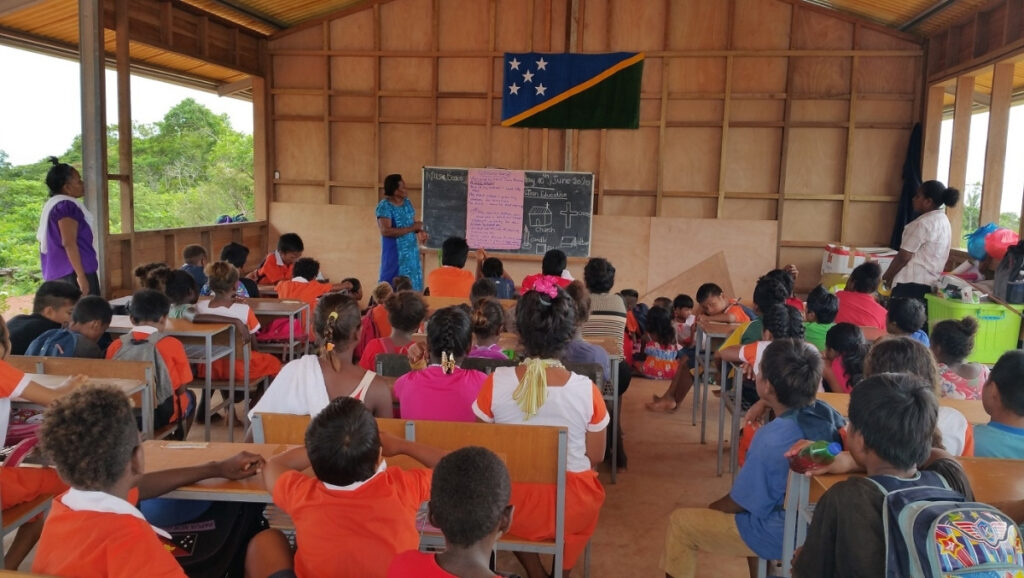
While English links the country to the world, it’s Pijin that carries everyday life — the laughter, stories, and spirit that unite many voices into one.
#4. Tracing the Ocean Paths of the First Islanders
The Solomon citizens trace their roots to ancient voyagers who crossed the Pacific thousands of years ago. Guided by stars and ocean currents, these explorers shaped the islands’ diverse cultures and seafaring spirit.
- 1200–1000 BCE: Lapita people arrive — skilled navigators and potters from the western Pacific.
- 1000 BCE–500 CE: Settlements spread across the islands; distinct languages and traditions form.
- 500–1000 CE: Polynesian and Micronesian voyagers mix with Melanesian groups, enriching local culture.
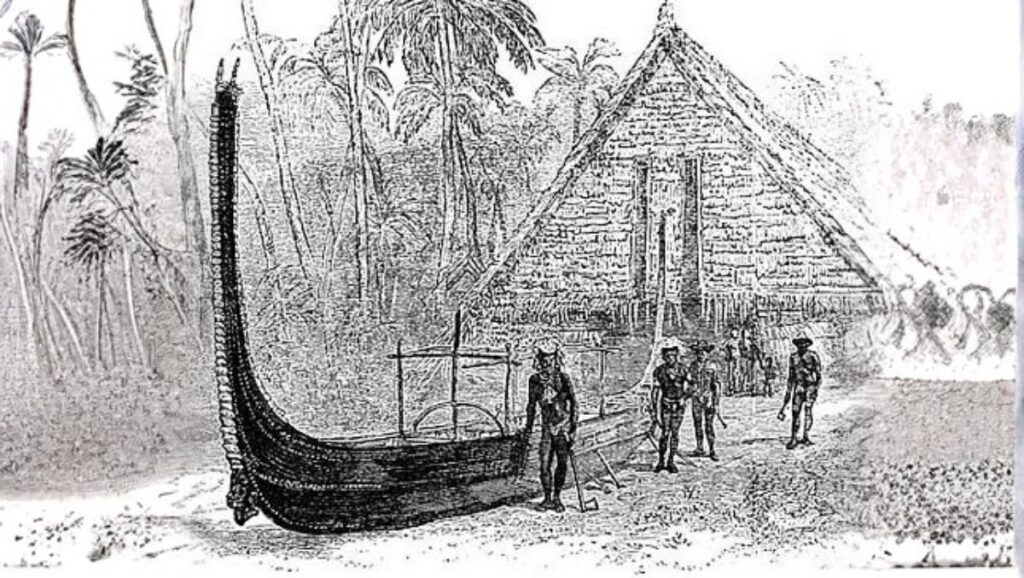
From these ocean journeys grew a people united by ancestry, resilience, and an enduring bond with the sea.
#5. Living Off the Land and Sea: Traditional Island Livelihoods
The people of the Solomon Islands have long lived in harmony with nature, relying on farming, fishing, and craftsmanship for their livelihoods. Families grow taro, yams, cassava, and sweet potatoes in small gardens, while fishing remains a daily tradition — men and women paddling canoes to catch fish and shellfish from the reefs.
Coconuts, betel nuts, and breadfruit also sustain local diets and trade. Even today, many islanders maintain these time-honored practices, living simply and sustainably — taking only what they need from the land and sea that have always nurtured them.

#6. Wantok System: The Heartbeat of Island Solidarity
At the core of Solomon Islands society lies the Wantok system — a traditional social network that binds families, friends, and entire communities together. The word “Wantok” comes from Pijin, meaning “one talk,” or people who speak the same language and share mutual trust.
In the Wantok system, everyone looks after one another — food, money, and labor are shared without expectation of repayment. It’s a living form of social security that leaves no one behind. When someone builds a house, celebrates a wedding, or faces hardship, their Wantok community steps in to help.
More than a custom, it’s a way of life — the heartbeat of Solomon Islands’ unity, preserving harmony and cooperation in a world that’s constantly changing.
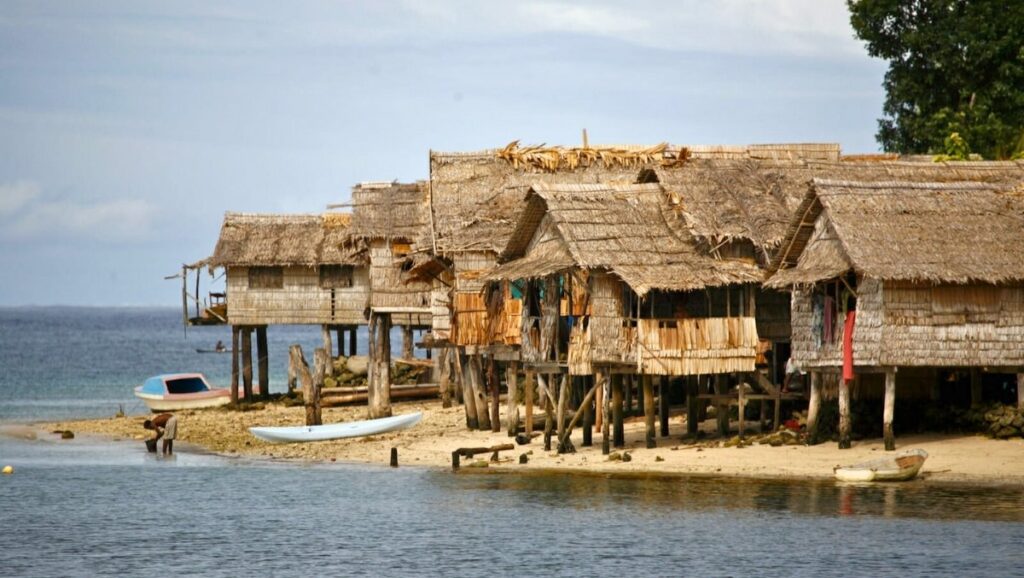
#7. Faith and Spirituality: Religious Landscape
Faith is deeply woven into the lives of the people of the Solomon Islands, influencing family life, education, and community traditions. Religion here is more than belief — it’s a way of belonging.
- Major faith: Christianity in Solomon Islands, introduced by missionaries in the 1800s, remains the foundation of island life.
- Main denominations: Anglican Church of Melanesia, Roman Catholic, South Seas Evangelical, and Seventh-day Adventist.
- Community role: Churches function as centers for worship, education, and social gatherings.
Many Solomon Islanders combine Christian teachings with traditional spiritual beliefs, showing respect for both ancestors and nature. Through this harmony of old and new, the people of the Solomon Islands express a faith that unites — one that celebrates both divine belief and cultural identity.
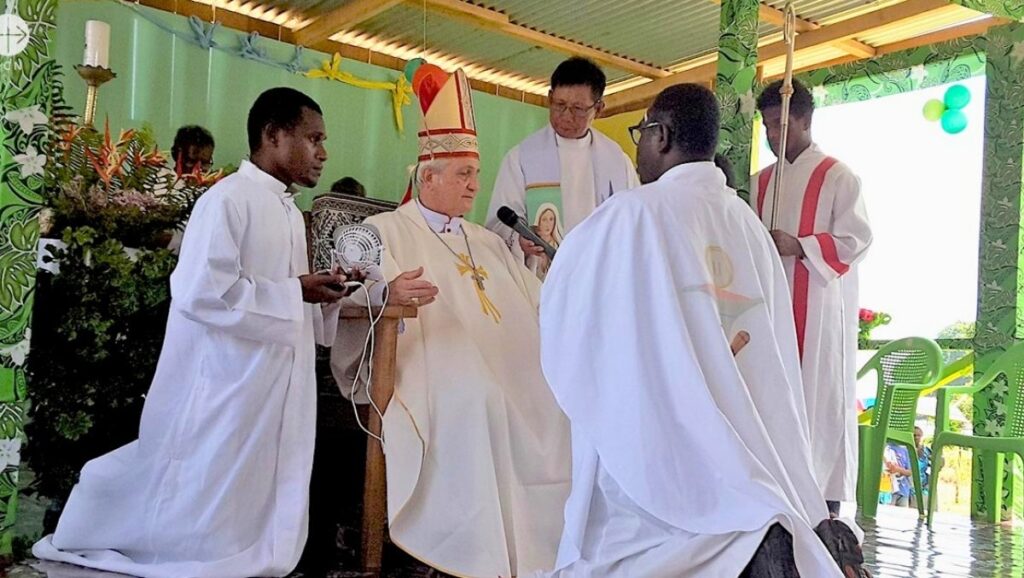
#8. Indigenous Beliefs: Spirits, Ancestors, and the Sacred Land
Before Christianity reached the islands, the Solomon Islanders practiced a rich spiritual tradition rooted in reverence for spirits, ancestors, and nature. Ancestors were believed to watch over their descendants, guiding and protecting families through rituals and offerings.
Many islands still have sacred or “Tambu” sites — such as caves, stones, and trees — considered dwelling places of powerful spirits. These areas are treated with deep respect and approached only during ceremonies. Traditional healers also continue to use kastom medicine, combining herbs, chants, and ancestral wisdom to restore health and harmony.
Even today, traces of these ancient beliefs remain woven into daily life, blending with Christianity and keeping alive the islands’ deep spiritual connection to the land and sea.
#9. Solomon Islands’ Traditional Ceremonies: Celebrating Life’s Milestones
Ceremonies are central to the lives of the indigenous people of the Solomon Islands, honoring each stage of life and strengthening community bonds.
- Birth and initiation: Newborns are welcomed with blessings and protection rituals, while initiation ceremonies mark the passage from childhood to adulthood.
- Marriage: A union of families and clans, with exchanges of shell money, food, and gifts symbolizing respect.
- Funeral rites: Funerals are sacred events. Songs, dances, and storytelling honor the deceased and guide their spirit onward in peace.
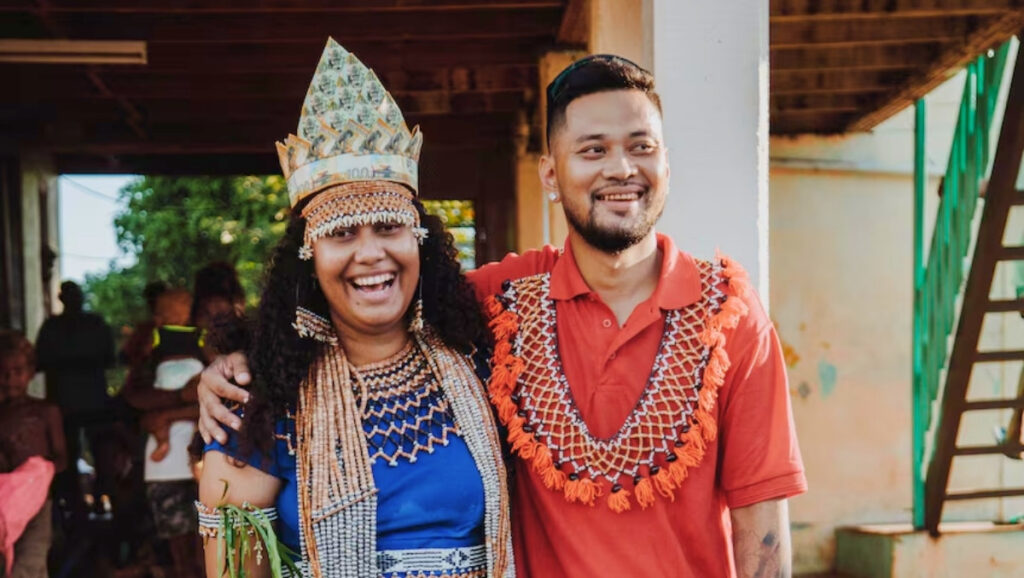
Each ceremony strengthens unity, passing down values of respect, cooperation, and belonging — timeless traditions that continue to define the spirit of Solomon Island society.
#10. Rhythm of the Islands: Music, Instruments, and Dance
Music and dance are at the heart of the Solomon Islands people’s cultural expression, connecting generations through rhythm, storytelling, and community. Traditional performances blend movement, chant, and melody to celebrate life, nature, and ancestry.
Cultural highlights:
- Traditional instruments — panpipes, bamboo flutes, slit drums, and shell rattles — create the islands’ distinct sound.
- Dance and storytelling: Movements often depict fishing, war, or daily life, accompanied by rhythmic drumming and chants.
- Contemporary island music blends traditional beats with reggae and gospel, reflecting the fusion of old and new.
Through music and dance, the residents of this area keep their stories alive — turning every celebration into a heartbeat of shared identity and joy.

#11. Village Life: Chiefs, Huts, and Shared Living
Life in the traditional villages of the Solomon Islands reflects the essence of Melanesian culture — community-based, cooperative, and guided by profound respect for elders.
Most settlements are small, scattered along the coast or nestled in lush valleys, where wooden huts with thatched roofs form tight-knit neighborhoods. Chiefs and tribal elders lead according to customary laws and clan systems, mediating disputes and maintaining social harmony.
Daily routines revolve around shared labor — men fish and farm, women weave and cook, children play freely while learning community values. In these Pacific Islander communities, the rhythm of life remains meaningful yet straightforward, sustained by cooperation, faith, and a profound connection to ancestral land.
#12. Family First — The Core of Solomon Society
In Melanesian identity, family is not limited to the nuclear household but extends across clans and generations. This vast network defines Solomon Islands’ family life, where everyone contributes to caring for children, elders, and the community. Love and loyalty flow through shared meals, storytelling, and collective work — key expressions of island community values.
Women stand at the center of this social fabric, balancing roles as caregivers, farmers, and cultural guardians. They sustain rural livelihoods and fishing, weave mats and baskets that reflect Pacific arts and crafts traditions, and pass down songs, legends, and moral lessons that preserve indigenous traditions of the Solomon Islands.
Urban centers like Honiara are seeing shifts in family dynamics due to modernization, yet cultural identity in the city remains grounded in kinship and shared responsibility. Whether in traditional villages or coastal towns, both family and women embody the soul of Pacific culture — nurturing unity, resilience, and compassion across generations.
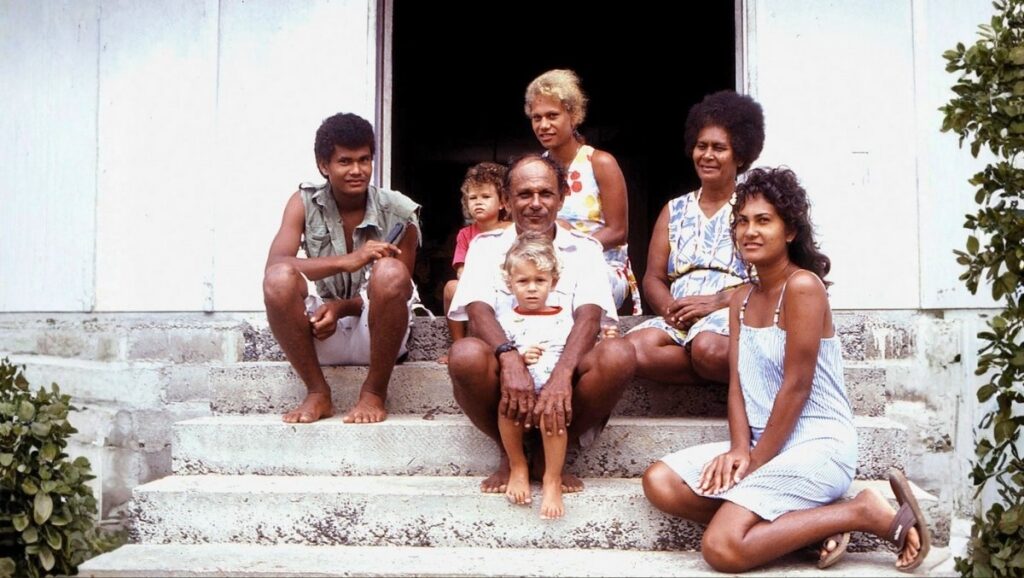
#13. Hands of Heritage: Art and Handicrafts
Art and craftsmanship are vital expressions of Melanesian culture and a living record of Oceanic ancestry and heritage.
- Wood carving: Used to create canoe prows, ancestor figures, and ceremonial masks — symbols of strength and spirituality.
- Shell and bone jewelry: Reflects social status and clan affiliation, often exchanged during rituals and marriage ceremonies.
- Weaving and textiles: Women craft baskets, mats, and fans from palm leaves, preserving Pacific arts and crafts traditions.
- Decorative motifs: Patterns inspired by nature — fish, waves, and birds — represent harmony with the environment.
Through their craftwork, artisans preserve stories, beliefs, and community pride that have been passed down for centuries. Each piece, whether carved, woven, or painted, carries a trace of this island’s soul.

#14. Oral Stories Passed Down Through Generations
Storytelling remains one of the most enduring indigenous traditions of the Solomon Islands, preserving wisdom, history, and cultural values through spoken word. Tales like Moro and the Sea Spirits, The Legend of Fera Island, and Hato, the Fire-Bringer are still shared in Pijin and local dialects today. These stories keep ancestral wisdom alive and strengthen the islands’ cultural identity across generations.
#15. Taste of the Islands: Solomon Islands Cuisine
The cuisine of the islands perfectly captures the essence of Pacific Islander life — simple, fresh, and rooted in community. Most dishes rely on ingredients grown or caught locally, reflecting a lifestyle of rural livelihoods and fishing. Besides, traditional cooking techniques still thrive alongside modern influences, creating a flavorful blend of past and present.
- Staple foods: Taro, sweet potato, cassava, and yams form the base of daily meals, often enriched with coconut cream or leafy greens.
- Fresh seafood: Fish, crabs, and shellfish are caught from nearby reefs and cooked over open fires or in bamboo tubes.
- Traditional cooking: Earth ovens (motu) are used for slow-roasting, a communal method that enhances flavor and togetherness.
- Modern influences: In Honiara, local ingredients now mix with Asian and Western cuisine, showing how island food continues to evolve.

#16. Knowledge for the Future — Challenges and Hopes in Education
Education in the islands is both a symbol of progress and a reflection of ongoing challenges in Melanesian society. While schools promote literacy and connect younger generations to the broader world, limited infrastructure and geographic isolation still make access uneven.
- Access and growth: Primary education is widespread, yet many rural areas still lack adequate facilities, and teacher shortages persist.
- Language and learning: English is the medium of instruction, while Pijin helps connect students across different ethnic groups in the SB.
- Modern challenges: Distance, lack of infrastructure, and economic barriers affect equal access, especially in outer islands.
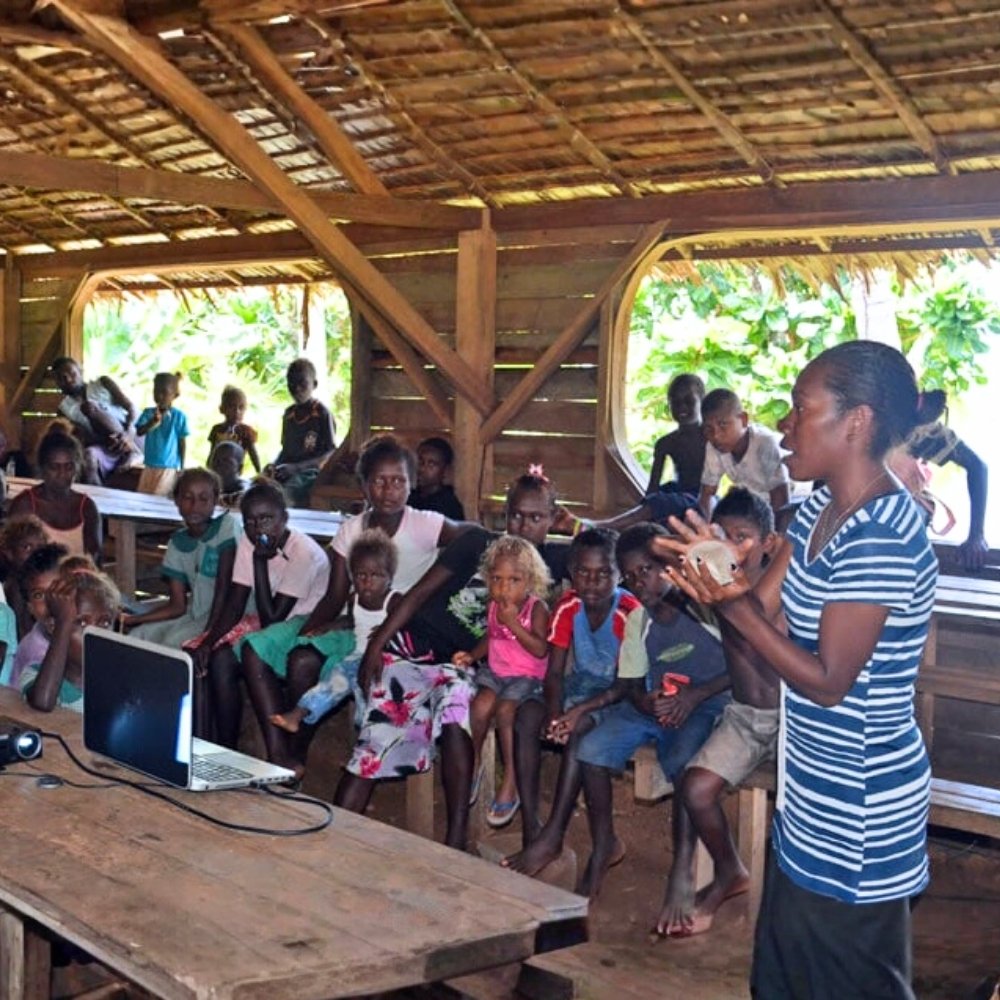
Looking ahead, new education initiatives aim to blend traditional wisdom with modern knowledge — empowering youth to embrace progress while staying rooted in Pacific culture and the shared values of their island communities.
#17. Rising Tides, Changing Lives: Climate Change Impact
Climate change is transforming everyday reality for Pacific Islander communities, altering coastlines and threatening the balance between people and nature. In this fragile environment, adaptation has become an act of survival — and of cultural preservation.
- Villages once safe from the sea now face coastal erosion as tides creep higher and storms grow stronger.
- The warming ocean disrupts coral reefs and reduces fish stocks, directly impacting rural livelihoods and fishing traditions.
- Saltwater is seeping into wells and farmlands, making freshwater and crops increasingly scarce.
- As some families move inland, questions arise over ancestral land ownership and loss of traditional territory.
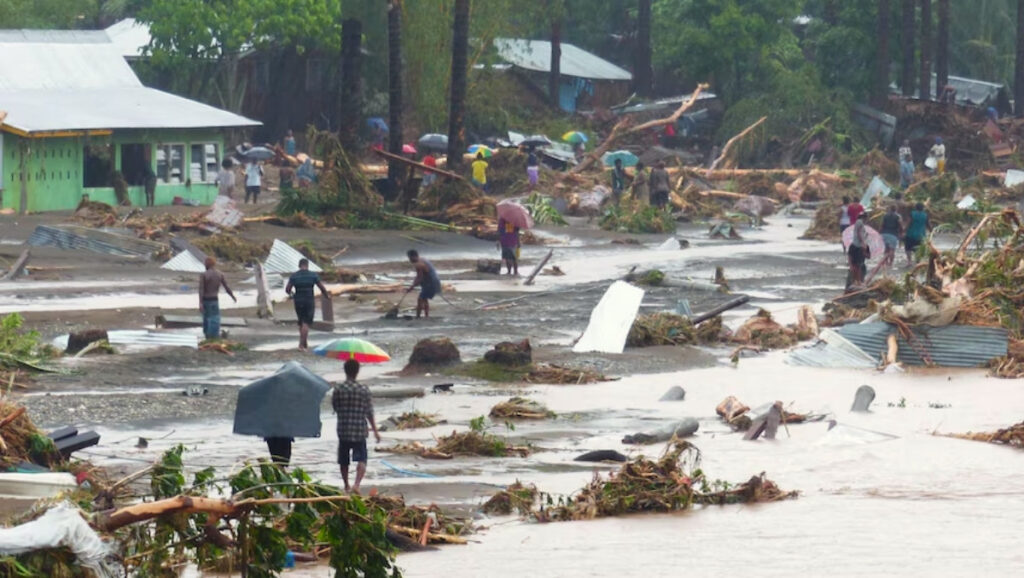
Yet, amid the challenges, communities are taking action — restoring mangroves, reviving local knowledge, and uniting through Melanesian resilience to safeguard both culture and the environment for generations to come.
#18. Celebrating Culture: Major Festivals and Events
Festivals in the islands are more than entertainment — they are living expressions of Pacific culture, where art, music, and tradition come together to celebrate identity and unity.
Across the year, the islands come alive with vibrant celebrations. Independence Day on July 7th fills towns and villages with parades, traditional dress, and joyful dancing — a proud reflection of national unity.
The Lagoon Festival celebrates the ocean’s bounty through canoe races, seafood feasts, and displays of Pacific Islander craftsmanship. At the same time, rural communities mark the Yam and Harvest Festivals to give thanks for fertile land and abundant crops.
Beyond national borders, the Pacific Arts Festival gathers artists and performers from across Melanesia and Polynesia, turning culture into connection. Through these shared moments of song, dance, and storytelling, the islands reaffirm a simple truth — culture is not just remembered; it is lived.
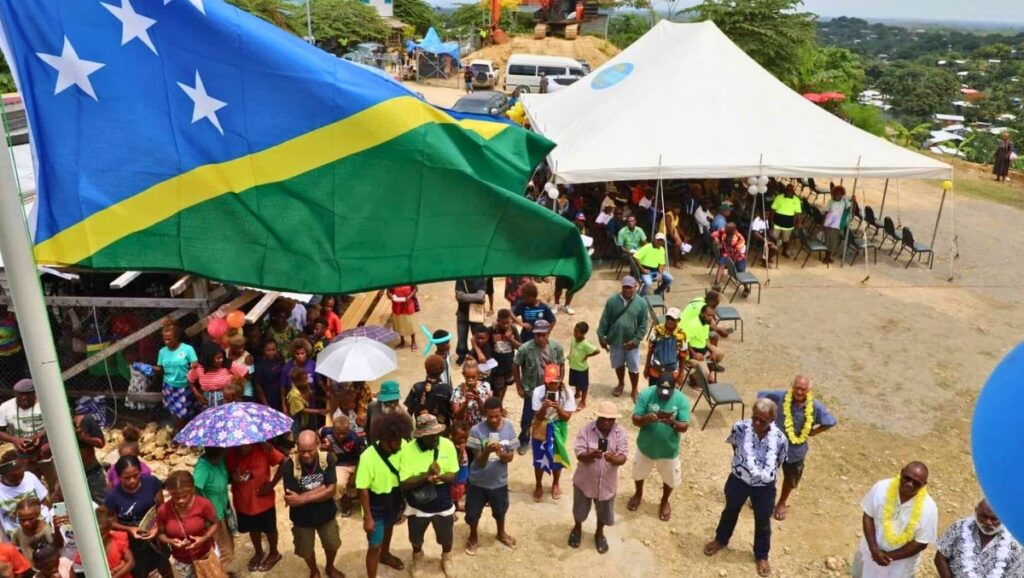
#19. Welcome to Paradise: Tourism and Hospitality
Tourism across the islands is built on authenticity — not luxury, but genuine human connection. Visitors come not only for pristine beaches and coral lagoons but to experience the warmth of Pacific Islander hospitality and everyday island community life. Here, travel becomes a cultural exchange rooted in respect, kindness, and tradition.
How tourism thrives in harmony with culture:
- Community-based tourism: Visitors stay in traditional villages, learn local crafts, and share meals with host families.
- Eco-friendly travel: Diving, hiking, and nature tours promote awareness of the islands’ biodiversity while supporting ancestral land ownership.
- Cultural immersion: Guests witness traditional dress and dance, storytelling, and Pacific arts and crafts traditions performed with pride.
- Sustainable livelihoods: Tourism provides income for rural areas while encouraging environmental conservation and cultural preservation.
In this island paradise, hospitality isn’t staged — it’s heartfelt. Every handshake, shared meal, and smile reflects the true spirit of the Pacific: welcoming strangers as friends, and friends as family.

#20. Protecting Heritage for Tomorrow
Preserving culture and environment is now a shared mission across the islands. Efforts to safeguard Melanesian identity and indigenous traditions go hand in hand with protecting fragile ecosystems threatened by modernization and climate change.
Local schools, churches, and cultural centers are reviving traditional music, crafts, and the Pijin language, ensuring young generations inherit not just land, but legacy. Conservation programs also promote ancestral land stewardship, encouraging harmony between people and nature.
By blending modern solutions with ancient wisdom, the islands are shaping a sustainable future — one where heritage, culture, and community remain at the heart of life in the Pacific.
Before You Go: Key Takeaways for Visiting the Solomon Islands
Visiting the islands is a rewarding experience — but to truly appreciate the culture and connect with the locals, it helps to travel with awareness and respect. Here are a few things to keep in mind before your journey:
- If you’re visiting a village, always ask permission before taking photos or entering sacred areas — respect for customary laws and clans is essential.
- You should greet people warmly and take time to chat; friendliness and conversation are a big part of Pacific culture.
- If invited to share a meal, accept graciously — food is a sign of hospitality and connection in Melanesian communities.
- You should bring essentials, as remote areas may have limited access to shops and modern facilities.
- If attending a ceremony or church service, dress modestly and follow local customs — Christianity plays a central role in daily life in Solomon Islands.
- You should support local artisans and guides to help sustain rural livelihoods and traditional crafts.
- If exploring nature or reefs, travel responsibly — protect marine life and respect ancestral land ownership.
Travel here isn’t just about seeing new places — it’s about understanding a way of life built on kindness, community, and respect for the world around you.
FAQs
What languages do people in the Solomon Islands speak?
Over 80 local languages are spoken. English is the official language, while Solomon Islands Pijin is the common tongue for daily communication across all the islands.
How has colonization shaped the modern identity of the Solomon Islands?
British colonization introduced Christianity, English education, and a centralized government system, which blended with traditional Melanesian customs and clan structures, creating the nation’s modern hybrid identity.
Which country owns Solomon Islands?
The Solomon Islands is an independent nation, gaining full sovereignty from Britain on July 7, 1978. It is now a member of the Commonwealth, with the British monarch as a ceremonial head of state.
What race are Solomon Islanders?
Most are of Melanesian descent (about 95%), with small Polynesian and Micronesian communities, and a few people of European, Chinese, or mixed heritage

I am a cultural historian and editor with over 10 years of research into pre-contact Polynesian history, the Lapita migration, and oral traditions. Share the excitement of my latest publications.
My contact:
Email: [email protected]
Tel: +64 21 456 7890



